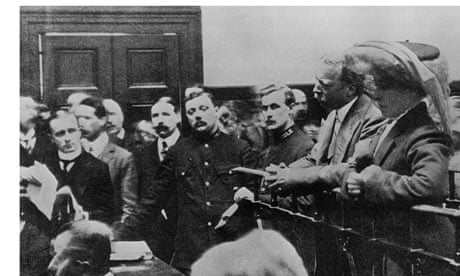Shocking Secrets and Real-Life Intrigue: Unveiling the Untold Tale Behind Rear Window!
Alfred Hitchcock’s masterpiece “Rear Window” has captivated audiences for decades with its gripping storyline and iconic characters. But what many people may not know is that the film was inspired by real-life events and based on a short story by Cornell Woolrich. In this article, we will delve into the inspiration behind “Rear Window” and explore the fascinating sources that influenced Hitchcock’s vision.
Cornell Woolrich and “It Had to Be Murder”

To understand the origins of “Rear Window,” we must first explore the work of Cornell Woolrich. Woolrich was a prolific writer known for his contributions to the pulp and detective fiction genres. In 1942, he penned a short story titled “It Had to Be Murder,” which served as the primary source material for the film.
“It Had to Be Murder” is a simplified version of “Rear Window,” depicting a similar tale but with fewer characters. Woolrich’s story laid the foundation for Hitchcock’s screenplay, providing the framework for the suspenseful narrative that unfolds within the confines of an apartment complex.
Real-Life Crimes: The Cases of Mahon and Crippen
While Woolrich’s story formed the basis of “Rear Window,” Hitchcock drew inspiration from two real-life crimes to enrich the plot. The first case involves Patrick Mahon, an Englishman who committed a gruesome murder in the early 1920s. Mahon dismembered his pregnant mistress’s body, scattering the pieces from a moving train. The chilling detail that caught Hitchcock’s attention was Mahon’s struggle to dispose of the victim’s head.

The second case that influenced Hitchcock was the infamous Dr. Crippen murder case. Dr. Crippen, a physician, poisoned his wife Cora and subsequently concealed his crime by burying and burning her remains in the basement of their home. This macabre tale fascinated Hitchcock, particularly the search for the victim’s head, which played a crucial role in the narrative of “Rear Window.”

Hitchcock’s Creative Adaptation
With the elements of Woolrich’s story and the real-life crimes in mind, Hitchcock set out to bring “Rear Window” to life on the silver screen. Paramount Pictures provided the platform for the film’s production, but the actual filming did not take place in Greenwich Village, as the story suggests.
Hitchcock meticulously scouted locations in Greenwich Village, dispatching photographers to capture the essence of the neighborhood from various angles and lighting conditions. However, the entire set for “Rear Window” was constructed on the Paramount Studios lot, allowing Hitchcock complete control over the environment and aesthetics.

The set itself was a massive undertaking, spanning 38 feet wide, 185 feet long, and 40 feet high. It included a meticulously designed drainage system for rain scenes and intricate wiring for complex lighting setups. Within this elaborate set, Hitchcock created 31 fully-furnished apartments, each with its own unique characteristics and inhabitants.
The Characters and Performances
“Rear Window” boasts an impressive cast, with Jimmy Stewart taking on the role of L.B. “Jeff” Jefferies, the wheelchair-bound photographer-turned-voyeur. Stewart’s portrayal of Jeff is nothing short of extraordinary, capturing the character’s fears, doubts, and curiosity with unparalleled authenticity.

Grace Kelly, in one of her standout performances, plays Lisa Fremont, Jeff’s fashionable and devoted girlfriend. Kelly’s on-screen charm and elegance perfectly complemented Stewart’s portrayal, creating a dynamic and memorable duo.
The supporting cast, including Wendell Corey, Thelma Ritter, and Raymond Burr, contributed stellar performances that added depth and intrigue to the film. Each character brought their own unique perspective to the story, further immersing audiences in the world of “Rear Window.”

The Cinematic Brilliance of “Rear Window”
At its core, “Rear Window” is a remarkable thriller filled with suspense and nail-biting moments. Hitchcock’s skillful direction and use of visuals allow the story to unfold simultaneously for both the protagonist and the audience. The voyeuristic qualities of cinema are explored, as Hitchcock cleverly uses the main character’s perspective to examine the art of observation.
While “Rear Window” is often lauded for its technical brilliance, it is important to recognize the emotional depth and complexity of the film. The characters in “Rear Window” are not mere plot devices; they are fully realized individuals with their own stories and motivations. Hitchcock expertly weaves together elements of suspense, humor, and warmth to create a truly multi-dimensional film.
Legacy and Impact
Since its release, “Rear Window” has garnered widespread acclaim and is frequently cited as one of the greatest films ever made. It received four Academy Award nominations and continues to be celebrated for its innovative storytelling and masterful direction.
The influence of “Rear Window” can be seen in countless films that have followed, with its voyeuristic themes and suspenseful atmosphere serving as a blueprint for future filmmakers. Hitchcock’s ability to create tension and captivate audiences remains unmatched, solidifying his status as a true cinematic visionary.
Rediscovering the True Story Behind “Rear Window”
As we unravel the true story behind “Rear Window,” we gain a deeper appreciation for the film’s origins and the creative genius of Alfred Hitchcock. From Woolrich’s gripping short story to the real-life crimes that inspired Hitchcock, each element contributes to the rich tapestry of this cinematic masterpiece.
“Rear Window” is more than just a thriller; it is a testament to the power of storytelling and the enduring impact of Hitchcock’s vision. As we revisit this timeless classic, let us marvel at its intricacies and relish in the knowledge of the true story that lies beneath the surface.
To truly understand the brilliance of “Rear Window,” one must delve into the true story behind its creation. From the pages of Cornell Woolrich’s short story to the real-life crimes that inspired Alfred Hitchcock, the film is a testament to the power of storytelling and the enduring legacy of one of cinema’s greatest directors. So, the next time you find yourself captivated by the suspense and intrigue of “Rear Window,” remember the true story that lies beneath its captivating surface.



